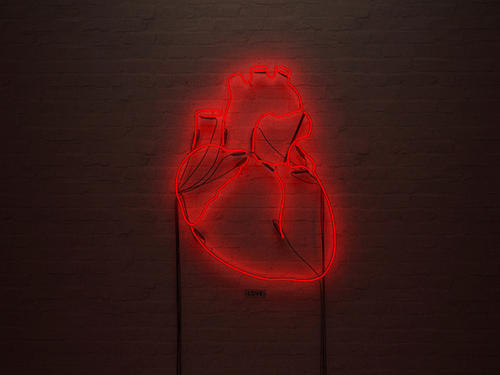By @_nastya_



By @_nastya_
More Posts from Aideeramirez and Others



ukyomi

SWEET TOOTH Yields one cocktail
2 1⁄2 oz vodka 1⁄2 oz St. Germain Champagne float Raw sugar rim
Instructions: Add vodka and St. Germain into a cocktail shaker with ice, shake well and strain into a sugar-rimmed glass. Top with a champagne float.


I do believe Marsellus my husband,your boss, told you to take me out and do whatever ı wanted. Now ı wanna dance, ı wanna win. I want that trophy, so dance good.













Cindy Reis by Alberto Pelayo for Numéro Netherlands July 2023
solar system size comparison
Via astrolover






Blanet: A new class of planet that could form around black holes
The dust clouds around supermassive black holes are the perfect breeding ground for an exotic new type of planet.
Blanets are fundamentally similar to planets; they have enough mass to be rounded by their own gravity, but are not massive enough to start thermonuclear fusion, just like planets that orbit stars. In 2019, a team of astronomers and exoplanetologists showed that there is a safe zone around a supermassive black hole that could harbor thousands of blanets in orbit around it.
The generally agreed theory of planet formation is that it occurs in the protoplanetary disk of gas and dust around young stars. When dust particles collide, they stick together to form larger clumps that sweep up more dust as they orbit the star. Eventually, these clumps grow large enough to become planets.
A similar process should occur around supermassive black holes. These are surrounded by huge clouds of dust and gas that bear some similarities to the protoplanetary disks around young stars. As the cloud orbits the black hole, dust particles should collide and stick together forming larger clumps that eventually become blanets.
The scale of this process is vast compared to conventional planet formation. Supermassive black holes are huge, at least a hundred thousand times the mass of our Sun. But ice particles can only form where it is cool enough for volatile compounds to condense.
This turns out to be around 100 trillion kilometers from the black hole itself, in an orbit that takes about a million years to complete. Birthdays on blanets would be few and far between!
An important limitation is the relative velocity of the dust particles in the cloud. Slow moving particles can collide and stick together, but fast-moving ones would constantly break apart in high-speed collisions. Wada and co calculated that this critical velocity must be less than about 80 meters per second.
source
-
 late-night-rumination reblogged this · 2 months ago
late-night-rumination reblogged this · 2 months ago -
 diamant0416 liked this · 4 months ago
diamant0416 liked this · 4 months ago -
 golddrenched reblogged this · 5 months ago
golddrenched reblogged this · 5 months ago -
 lunatico--sonhador-blog liked this · 8 months ago
lunatico--sonhador-blog liked this · 8 months ago -
 granstromjulius liked this · 9 months ago
granstromjulius liked this · 9 months ago -
 golddrenched reblogged this · 10 months ago
golddrenched reblogged this · 10 months ago -
 golddrenched reblogged this · 11 months ago
golddrenched reblogged this · 11 months ago -
 concravatta liked this · 1 year ago
concravatta liked this · 1 year ago -
 mik1264 liked this · 1 year ago
mik1264 liked this · 1 year ago -
 a-drea-mr reblogged this · 1 year ago
a-drea-mr reblogged this · 1 year ago -
 a-drea-mr liked this · 1 year ago
a-drea-mr liked this · 1 year ago -
 soulsurfer55 liked this · 1 year ago
soulsurfer55 liked this · 1 year ago -
 miagrphx reblogged this · 1 year ago
miagrphx reblogged this · 1 year ago -
 dysepp liked this · 1 year ago
dysepp liked this · 1 year ago -
 floopydisc liked this · 1 year ago
floopydisc liked this · 1 year ago -
 brighteyesforabrightgirl reblogged this · 1 year ago
brighteyesforabrightgirl reblogged this · 1 year ago -
 retiredtobeach liked this · 1 year ago
retiredtobeach liked this · 1 year ago -
 zpete77 liked this · 1 year ago
zpete77 liked this · 1 year ago -
 snappyaxe liked this · 1 year ago
snappyaxe liked this · 1 year ago -
 thecolombiankush reblogged this · 1 year ago
thecolombiankush reblogged this · 1 year ago -
 cassandraherondale reblogged this · 1 year ago
cassandraherondale reblogged this · 1 year ago -
 ragnokraven liked this · 1 year ago
ragnokraven liked this · 1 year ago -
 yarynochka liked this · 1 year ago
yarynochka liked this · 1 year ago -
 610lover reblogged this · 1 year ago
610lover reblogged this · 1 year ago -
 610lover liked this · 1 year ago
610lover liked this · 1 year ago -
 fireproofcosmos liked this · 1 year ago
fireproofcosmos liked this · 1 year ago -
 estimulantesparaestavida liked this · 1 year ago
estimulantesparaestavida liked this · 1 year ago -
 paakai liked this · 1 year ago
paakai liked this · 1 year ago -
 eslibardhoshi liked this · 1 year ago
eslibardhoshi liked this · 1 year ago -
 travissfragments liked this · 1 year ago
travissfragments liked this · 1 year ago -
 killkillkills reblogged this · 2 years ago
killkillkills reblogged this · 2 years ago -
 rubenspaintbrush liked this · 2 years ago
rubenspaintbrush liked this · 2 years ago -
 ofsenses-blog liked this · 2 years ago
ofsenses-blog liked this · 2 years ago